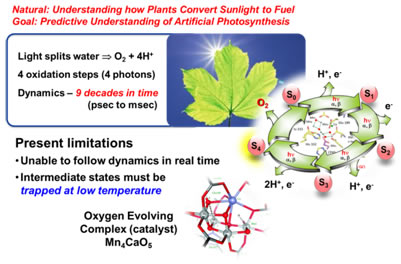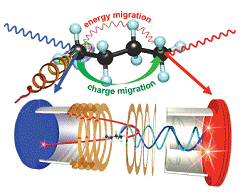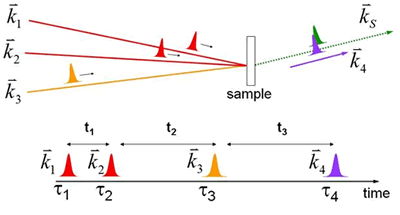From Fundamental Energy & Charge Dynamics to Photosynthesis

The flow of energy and charge in molecules are central to both natural and man-made molecular systems that convert sunlight into fuels or directly into electricity. Understanding and controlling these processes remains a fundamental science challenge, in large part because we lack the requisite tools to probe these processes simultaneously at the atomic level and on natural timescales. Because charge migration and localization in molecules is a coordinated process involving both electronic and atomic motion, a complete picture requires simultaneous measurement of both parts of the coupled system.

Molecular reaction microscopes represent a powerful approach for such kinematically complete studies, using time-of-flight and coincidence techniques to measure the momenta of all the components that drive energy and charge dynamics in molecular complexes. To date, these approaches, employing third-generation synchrotrons, have focused on ground-state molecules. The proposed NGLS will enable reaction microscope studies of (photo-induced) excited-state dynamics for the first time, combining high repetition rate and ultrashort pulses to capture rare coincident events in reacting complexes.
 Multidimensional X-ray spectroscopy represents an entirely new tool enabled by high-repetition-rate X-ray lasers. This approach incorporates time-ordered sequences of coherent X-ray pulses to generate a signal that is a function of multiple time delays and/or photon energies. The resulting 2-D signal maps follow coherent charge flow and energy relaxation between specific atomic sites and reveal how these correlations evolve, for example during charge transfer processes, or during reactions that change the molecular geometry. Multidimensional X-ray spectroscopy will provide critical insight into correlated electron systems and molecular complexes with strong coupling between electronic and nuclear dynamics.
Multidimensional X-ray spectroscopy represents an entirely new tool enabled by high-repetition-rate X-ray lasers. This approach incorporates time-ordered sequences of coherent X-ray pulses to generate a signal that is a function of multiple time delays and/or photon energies. The resulting 2-D signal maps follow coherent charge flow and energy relaxation between specific atomic sites and reveal how these correlations evolve, for example during charge transfer processes, or during reactions that change the molecular geometry. Multidimensional X-ray spectroscopy will provide critical insight into correlated electron systems and molecular complexes with strong coupling between electronic and nuclear dynamics.
Beyond fundamental energy and charge dynamics, the planned NGLS will provide a far greater understanding of natural photosynthetic reactions knowledge that is essential to inspire new approaches for optimal conversion of sunlight to fuels in artificial photosystems that are simultaneously robust, efficient, and based on abundant materials. NGLS X-ray lasers will bridge several significant capability gaps:
- An ability to probe these processes on the fundamental timescales and under ambient conditions where catalytic reactions, bond formation, and charge transfer processes occur
- A capability for tunable, two-color X-ray pump, X-ray probe, and multidimensional X-ray spectroscopy techniques for following the flow of valence charges between different atomic sites
- High average brightness (unachievable from synchrotron sources) that will directly reveal the charge correlations thought to play a key role in important catalytic processes, with moderate peak power to avoid disrupting the system under study

